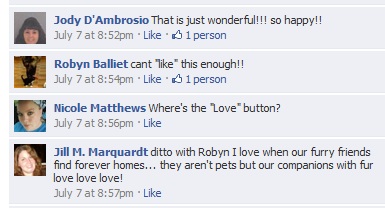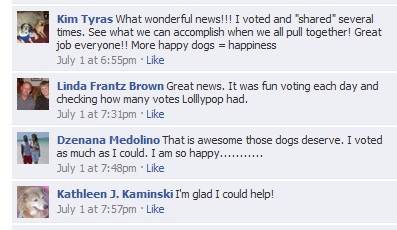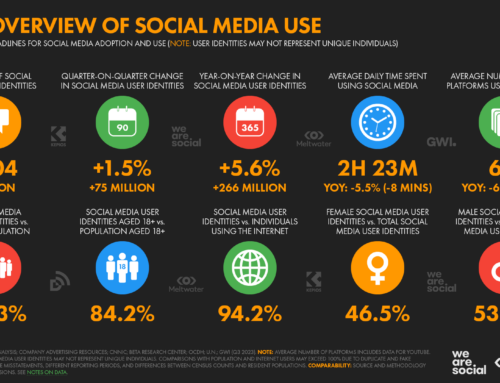In today’s guest post, Kate Antoniades shows how planning ahead and paying attention to what your fans, friends, and followers react to can make all the difference in your social media marketing. She also proves that social media can work at the local level. Thanks Kate, for sharing a super easy way to improve your Facebook strategy! ~Kivi
Guest Post by Kate Antoniades, Communications and Social Media Coordinator at Lollypop Farm, the Humane Society of Greater Rochester
Earlier this year, after a couple of years of keeping my Facebook and Twitter plans for Lollypop Farm in my head or scribbled on Post-its stuck to my monitor, I created a social media calendar in Google Docs. It’s become a very useful tool for planning ahead and for keeping track of what I’ve posted.
Soon after I started using the calendar, I began tracking the feedback rate for each Facebook post—the percentage that indicates the comments and “likes” per impression. (Each time a post appears in someone’s news feed, on the page itself, or in a page badge, Facebook calls that an impression.)
With about two months of data, I decided to use the feedback rate to find out exactly which posts made the greatest and least impact. Other factors, like the time of day or day of the week that something is posted, may affect feedback, but that was beyond the scope of what I wanted to examine.
I found that the majority of the 20 posts that fell below a .05% feedback rating could be placed into three categories: mentions of various events and classes (those that were unrelated to pet adoption), notices of holiday closings, and news of job and volunteer opportunities. We feel that these are important messages, but they don’t seem to grab the attention of our supporters as much as we’d like.
The 10 posts that topped a 0.75% feedback rating (ranging from 0.78% to 3.21%) were all one of two types. Many shared news of pets being adopted (either a single animal or many animals during a successful adoption event). Here’s one example of responses to an adopt-a-thon that found homes for a record number of cats and kittens:

The other posts that had a lot of impact—including the single most popular post of the two months I reviewed—were related to an online contest for animal shelters that awarded five platform dog beds. Our supporters got really excited about this contest because it offered them an easy way to help the dogs in our care. With just a couple of mouse clicks, they could vote and encourage their Facebook friends to vote, too.
We ended up winning the contest, and Facebook was certainly a major factor. These were some of our supporters’ reactions to the good news:

The conclusions I can draw from this close look at feedback rates aren’t earthshattering, but they serve as good reminders: Our supporters want to hear good news, specifically about pets being placed in new homes, and they want to know easy ways they can help.
Looking at these numbers has prompted me to share more of our “happy endings” and not let them fall through the cracks when I’m trying to encourage people to register for class Y or attend event Z.
The “easy ways to help” posts might be a little tougher to find—since the assistance we most often need involves adopting a pet, making a donation, or volunteering time—but perhaps I’ll suggest that our supporters search the web using GoodSearch or do their online shopping through iGive, both of which can send small sums of money our way.
Fortunately, I’ll get a good idea of how these posts are received—simply by checking the feedback rating.
Kate Antoniades is the Communications and Social Media Coordinator at Lollypop Farm, the Humane Society of Greater Rochester (Fairport, NY).







